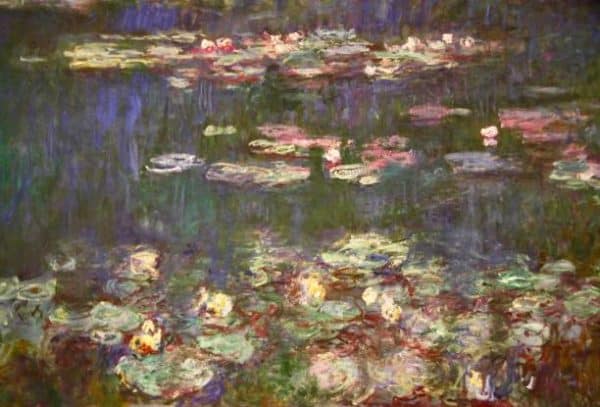Claude Monet, a prominent figure in the Impressionist movement of the late 19th century, is celebrated for his revolutionary approach to capturing the essence of light and color in his artworks. Born in Paris in 1840, Monet’s passion for painting began at a young age, eventually leading him to become one of the most influential artists of his time. Throughout his career, Monet created a vast body of work, including iconic pieces that continue to captivate audiences worldwide.
Among Monet’s most famous paintings is “Impression, Sunrise,” completed in 1872. This masterpiece is widely regarded as the namesake of the Impressionist movement and epitomizes Monet’s innovative style. In this painting, Monet depicts the harbor of Le Havre at dawn, utilizing loose brushstrokes and a vibrant color palette to convey the fleeting effects of light and atmosphere. “Impression, Sunrise” is housed in the Musée Marmottan Monet in Paris, where visitors can marvel at its evocative depiction of a tranquil seascape. To learn more about the techniques and significance of “Impression, Sunrise,” click here.

Another iconic work by Monet is “Water Lilies,” a series of paintings inspired by the picturesque pond in his garden at Giverny. One of the most renowned pieces from this series is “Water Lilies and Japanese Bridge,” painted in 1899. This enchanting composition showcases Monet’s mastery of capturing the interplay between light, water, and vegetation, creating a serene and immersive experience for the viewer. “Water Lilies and Japanese Bridge” is housed in the Musée de l’Orangerie in Paris, where it is displayed in specially designed oval rooms, allowing visitors to immerse themselves in Monet’s tranquil oasis.
In addition to his landscapes and garden scenes, Monet also had a fascination with capturing the beauty of urban life. One notable example is “The Boulevard des Capucines,” painted in 1873. This bustling street scene, depicting a bustling boulevard in Paris, showcases Monet’s skillful use of light and shadow to evoke the energy and dynamism of city life. “The Boulevard des Capucines” can be found in the Nelson-Atkins Museum of Art in Kansas City, Missouri, where it serves as a testament to Monet’s ability to capture the essence of modernity.
Monet’s exploration of light and atmosphere extended beyond the confines of the French landscape, as seen in his series of paintings depicting the iconic façade of Rouen Cathedral. One notable example is “Rouen Cathedral, West Façade, Sunlight,” completed in 1894. In this striking composition, Monet depicts the cathedral bathed in the warm glow of sunlight, creating a sense of ethereal beauty and spiritual transcendence. “Rouen Cathedral, West Façade, Sunlight” is housed in the Musée d’Orsay in Paris, where it continues to mesmerize visitors with its luminous depiction of a timeless architectural marvel.
Monet’s enduring legacy as a pioneer of Impressionism is further exemplified in his series of paintings capturing the changing seasons and atmospheric conditions at his beloved home in Giverny. One such masterpiece is “The Artist’s Garden at Giverny,” painted in 1900. This vibrant composition showcases Monet’s lush garden in full bloom, with an explosion of color and texture that reflects the artist’s deep connection to nature. “The Artist’s Garden at Giverny” is housed in the Musée d’Orsay in Paris, where it continues to inspire viewers with its celebration of beauty and harmony.
In conclusion, Claude Monet’s artworks continue to captivate audiences around the world with their timeless beauty and innovative approach to capturing the essence of light, color, and atmosphere. From his iconic landscapes to his intimate garden scenes, Monet’s paintings offer a glimpse into the artist’s profound appreciation for the natural world and his relentless pursuit of artistic expression. Through his pioneering techniques and unwavering dedication to his craft, Monet remains a towering figure in the history of art, leaving behind a legacy that continues to inspire and enchant generations of art lovers.
 Gearfuse Technology, Science, Culture & More
Gearfuse Technology, Science, Culture & More


